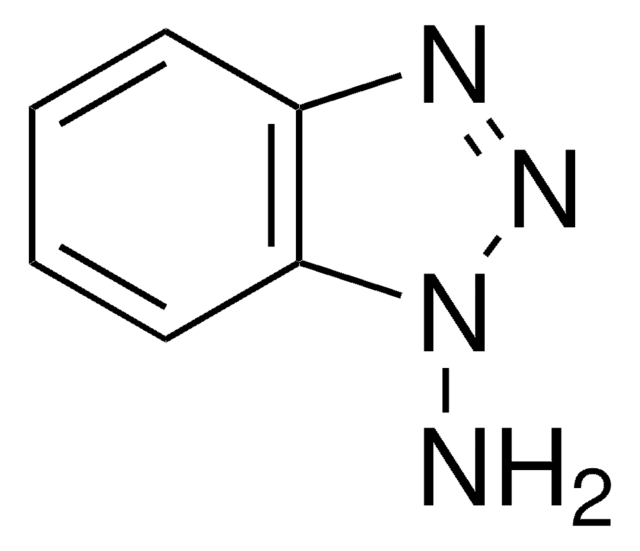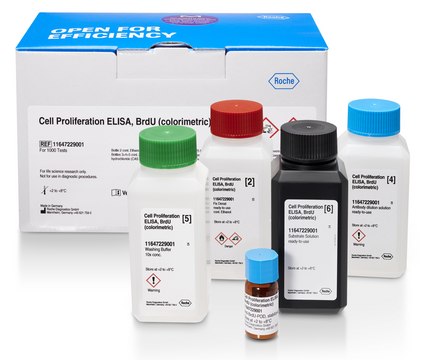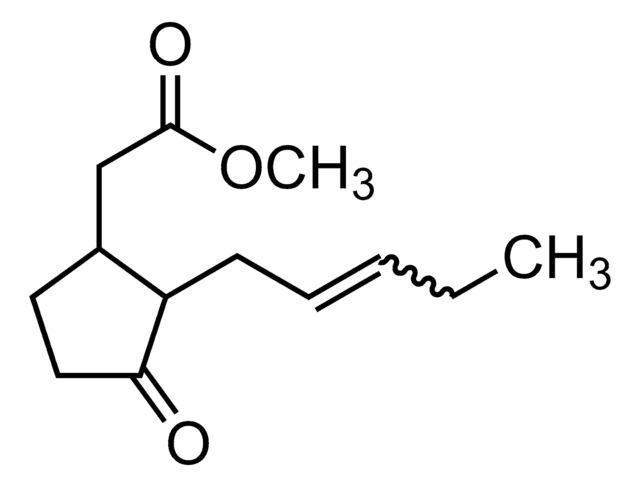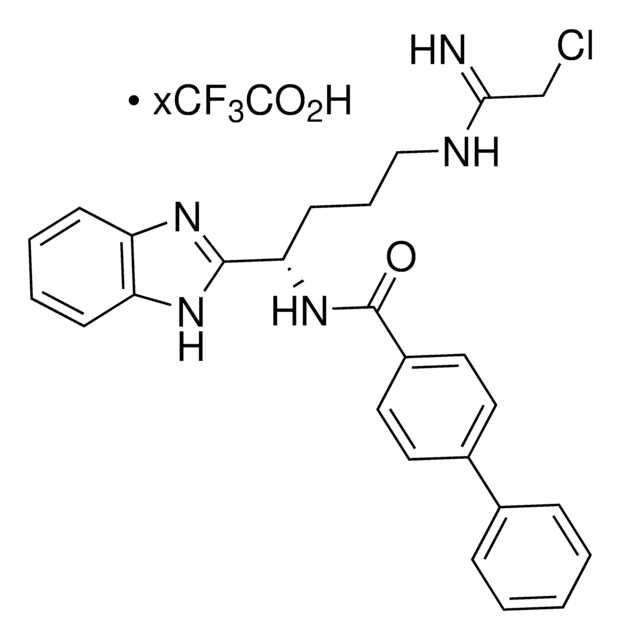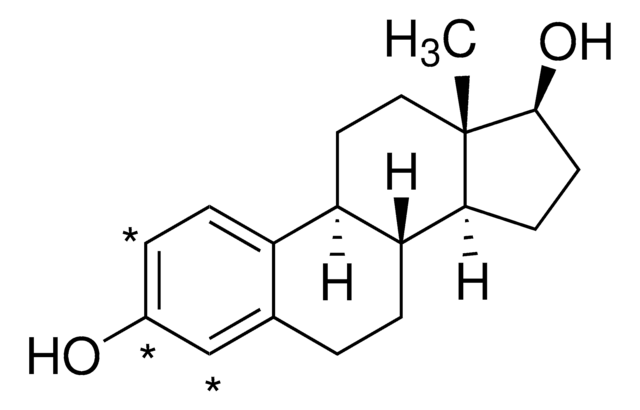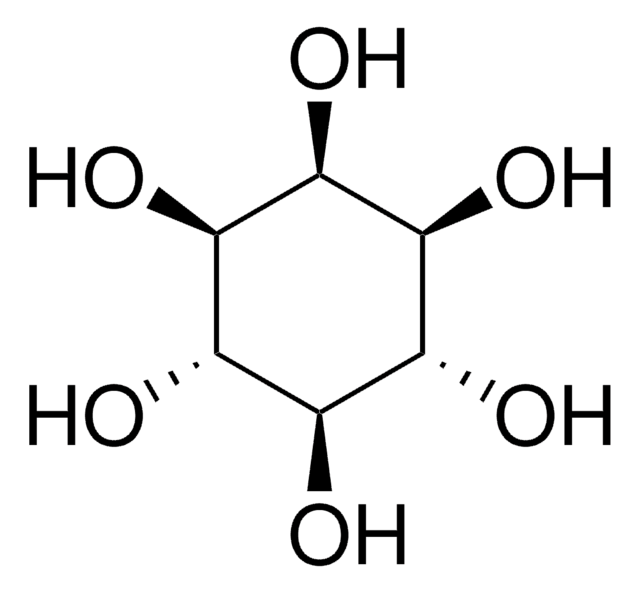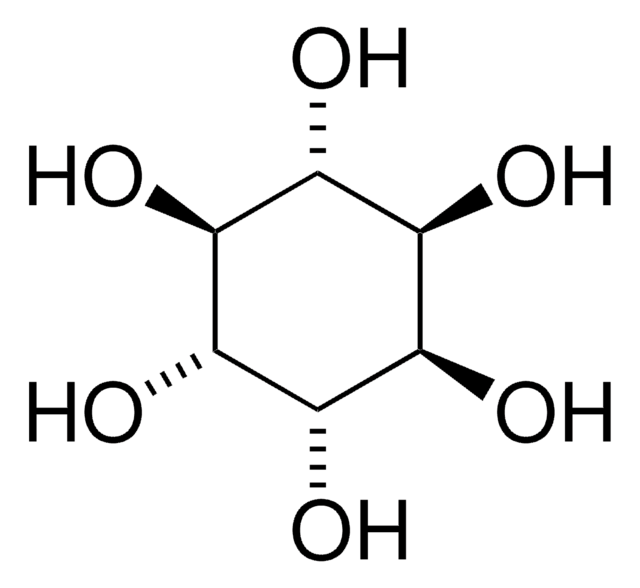SML0623
Iniparib
≥98% (HPLC)
Synonym(s):
4-Iodo-3-nitrobenzamide, BSI-201
Sign Into View Organizational & Contract Pricing
All Photos(1)
About This Item
Empirical Formula (Hill Notation):
C7H5IN2O3
CAS Number:
Molecular Weight:
292.03
UNSPSC Code:
12352200
NACRES:
NA.77
Recommended Products
Assay
≥98% (HPLC)
form
powder
color
white to beige
solubility
DMSO: 5 mg/mL, clear
storage temp.
room temp
InChI
1S/C7H5IN2O3/c8-5-2-1-4(7(9)11)3-6(5)10(12)13/h1-3H,(H2,9,11)
InChI key
MDOJTZQKHMAPBK-UHFFFAOYSA-N
General description
Iniparib is also called as BSI-201. It is an anticancer agent.
Biochem/physiol Actions
4-iodo-3-nitrobenzamide, the intracellular metabolite of iniparib has the capability to covalently prevent PARP1 (poly(ADP-Ribose) polymerase 1) under cell-free conditions. PARP inhibitor also plays a role in BRCA (breast cancer susceptibility protein) deficient tumors.
Iniparib (BSI-201) is an antineoplastic originally thought to be a poly(ADP-ribose) polymerase-1 (PARP-1) inhibitor. Recent studies indicate Iniparib is not a PARP-1 inhibitor, and its mechanism of action is currently unknown.
Signal Word
Warning
Hazard Statements
Precautionary Statements
Hazard Classifications
Acute Tox. 4 Oral - Eye Irrit. 2
Storage Class Code
11 - Combustible Solids
WGK
WGK 3
Flash Point(F)
Not applicable
Flash Point(C)
Not applicable
Regulatory Information
新产品
Choose from one of the most recent versions:
Certificates of Analysis (COA)
Lot/Batch Number
Don't see the Right Version?
If you require a particular version, you can look up a specific certificate by the Lot or Batch number.
Already Own This Product?
Find documentation for the products that you have recently purchased in the Document Library.
Failure of iniparib to inhibit poly (ADP-Ribose) polymerase in vitro.
Patel AG, et al.
Clinical Cancer Research, 18(6), 1655?1662-1655?1662 (2012)
Iniparib plus chemotherapy in metastatic triple-negative breast cancer.
O'Shaughnessy J, et al.
The New England Journal of Medicine, 364(3), 205-214 (2011)
Evidence for the efficacy of Iniparib, a PARP-1 inhibitor, in BRCA2-associated pancreatic cancer.
Fogelman DR, et al.
Anticancer Research, 31(4), 1417-1420 (2011)
Hyomin Park et al.
Free radical biology & medicine, 204, 195-206 (2023-05-06)
The important pathway toward liver fibrosis is the TGF-β1-induced activation of hepatic stellate cells (HSCs). To discover chemicals to inhibit liver fibrosis, we screened 3000 chemicals using cell array system where human HSCs line LX2 cells are activated with TGF-β1.
Our team of scientists has experience in all areas of research including Life Science, Material Science, Chemical Synthesis, Chromatography, Analytical and many others.
Contact Technical Service